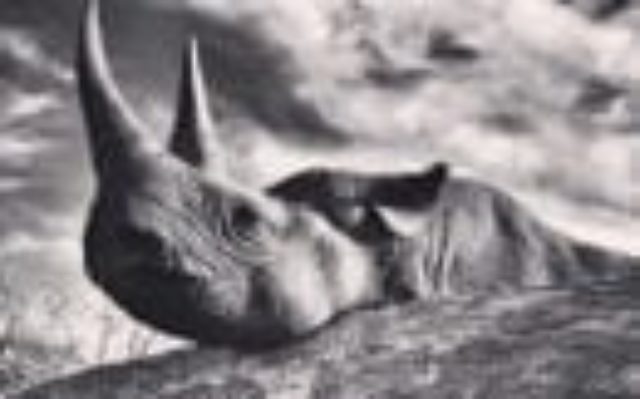
 He has travelled the world in the line of royal duty, taking in the planet’s most spectacular scenery in a lifetime of overseas tours, charity trips and private holidays. All the while, the Duke of Sussex has been recording the sights on camera, he has disclosed, as he shares a series of photographs from his previously-unknown hobby. The Duke, who is expected to increase his focus on conservation work in the coming years, has released eight pictures on Instagram as he and the Duchess urge the public to “learn about, celebrate and continue to safeguard our planet, our home”. In a 351-word caption marking earthday, the Duke and Duchess told their 4.9m social media fans: “Every one of us can make a difference, not just today but everyday.” Fans have noted that the Sussexes are increasingly embracing their ability to control the release of “unseen” pictures on Instagram to highlight their work, writing in-depth captions about charities and detailing previous endeavours behind-the-scenes. View this post on Instagram Today is earthday – an opportunity to learn about, celebrate and continue to safeguard our planet, our home. The above, Their Royal Highnesses in Rotorua, New Zealand. Of the 170 different species originally planted in the early 1900’s, only a handful of species, including these majestic Redwoods, remain today. Next, we invite you to scroll through a series of 8 photos taken by The Duke of Sussex©️DOS sharing his environmental POV including: Africa’s Unicorn, the rhino. These magnificent animals have survived ice ages and giant crocodiles, amongst other things! They have adapted to earth’s changing climate continually for over 30 million years. Yet here we are in 2019 where their biggest threat is us. A critical ecosystem, Botswana’s Okavango Delta sustains millions of people and an abundance of wildlife. Huge bush fires, predominantly started by humans, are altering the entire river system; the ash kills the fish as the flood comes in and the trees that don’t burn become next year’s kindling. Desert lions are critically endangered due partly to human wildlife conflict, habitat encroachment and climate change. 96% of mammals on our �� are either livestock or humans, meaning only 4% remaining are wild animals. Orca and Humpback whale populations are recovering in Norway thanks to the protection of their fisheries. Proof that fishing sustainably can benefit us all. Roughly 3/4 of Guyana is forested, its forests are highly diverse with 1,263 known species of wildlife and 6,409 species of plants. Many countries continue to try and deforest there for the global demand for timber. We all now know the damage plastics are causing to our oceans. Micro plastics are also ending up in our food source, creating not just environmental problems for our planet but medical problems for ourselves too. When a fenced area passes its carrying capacity for elephants, they start to encroach into farmland causing havoc for communities. Here @AfricanParksNetwork relocated 500 Elephants to another park within Malawi to reduce the pressure on human wildlife conflict and create more dispersed tourism. Every one of us can make a difference, not just today but everyday earthday A post shared by The Duke and Duchess of Sussex (@sussexroyal) on Apr 22, 2019 at 6:54am PDT Their most recent Instagram post – the 14th since they launched @SussexRoyal on April 2nd – told followers: “We invite you to scroll through a series of 9 photos taken by The Duke of Sussex sharing his environmental POV [point of view].” The Duke has hitherto kept his photography hobby largely under wraps. During an autumn tour of Australia, Tonga, Fiji and New Zealand, he allowed the Kensington Palace social media account to share a handful of personal photographs and videos taken during the course of the trip. An artistic shot of Botswana’s Okavango Delta Credit: Duke of Sussex He has now issued a series of eight images taken as he has flown around the world to Botswana, Guyana, Norway, Malawi and beyond, shot in private moments during his tours, charity trips or leisure time. Today’s message, which was posted at 3pm BST and 10am for their American audience, outlined the eight different scenes chosen by the Duke beginning with the animal they called the “African Unicorn” – better known as the rhino. Prince Harry’s visit to Norway Credit: Duke of Sussex “These magnificent animals have survived ice ages and giant crocodiles, amongst other things!” the couple said. “They have adapted to earth’s changing climate continually for over 30 million years. Yet here we are in 2019 where their biggest threat is us.” Other pictures included the forest of Guyana, where Prince Harry went on tour in 2017, the orca and humpback whales of Norway, and an elephant in Malawi with a helicopter flying in the background. One image showed plastics pollution on a pebble beach, another showed a close-up on a desert lion’s eyeball, and a particularly artistic shot captured two feathers in front of a sunset in Botswana’s Okavango Delta where “huge bush fires, predominantly started by humans, are altering the entire river system”. Members of the modern Royal Family have long taken their own record of trips, from the watercolour sketches commissioned by Queen Victoria and Albert to the official artist the Prince of Wales likes to take on tour. The Queen has often been seen with a camera capturing personal memories, and the Duchess of Cambridge has shared some of her efforts with the world in the select birthday pictures of her children. Plastic pollution, as photographed by Prince Harry Credit: Duke of Sussex More unusually, the Duke and Duchess of Sussex are now choosing to delight fans with greater regular insight into their personal lives, using Instagram to share their own pictures and carefully handpicked information. Earlier this month, they used the medium to reveal that the then-Meghan Markle undertook elephant conservation work with Prince Harry when they were dating in 2017. ‘The viewer feels like they are almost present’ By Lee Martin, Telegraph senior picture editor The Duke of Sussex certainly shows promise as a photographer. He avoids many of the pitfalls fallen into by amateurs – and some pros. With a good eye for the compositional tricks of the trade, he above all ensures he does not bore us by shooting only from eye-level. A black-and-white picture of a rhino is his best shot, in my opinion, using a number of techniques to produce a powerful image. Psychologically, the effect of the low-angle shot is that it makes the subject look strong and powerful. It is also shot close-up, which makes the viewer feel they are almost present. Following the work of African Parks Network in Malawi Credit: @sussexroyal He also employs one of my favourite tricks: if you were to draw a line from the horn to the feet it would be diagonal, creating points of interest and giving the image depth. It’s the ambiguity I love. What is going on? Is the rhino resting, is it hurt, is it simply caught in a moment on the move? The photo leaves room for interpretation, making it all the more rewarding for the viewer. Sunrise and sunsets are viewed by some as a photographic cliché. The Duke just about avoids that in his Okavango Delta shot by using the feather to frame the sun. The desert lion is another favourite. How often do we get to look into the eye of a big cat? A long lens and imagination does the trick. And there’s that use of the diagonal again. The Duke is compelling us to look at the world in a different way. It is, of course, impossible to really compare the chalk and cheese of environmental and portrait photograph. In my opinion, the only real failure from our royal photographers is the Duke’s picture from Norway. Do not chop a whale in half.
He has travelled the world in the line of royal duty, taking in the planet’s most spectacular scenery in a lifetime of overseas tours, charity trips and private holidays. All the while, the Duke of Sussex has been recording the sights on camera, he has disclosed, as he shares a series of photographs from his previously-unknown hobby. The Duke, who is expected to increase his focus on conservation work in the coming years, has released eight pictures on Instagram as he and the Duchess urge the public to “learn about, celebrate and continue to safeguard our planet, our home”. In a 351-word caption marking earthday, the Duke and Duchess told their 4.9m social media fans: “Every one of us can make a difference, not just today but everyday.” Fans have noted that the Sussexes are increasingly embracing their ability to control the release of “unseen” pictures on Instagram to highlight their work, writing in-depth captions about charities and detailing previous endeavours behind-the-scenes. View this post on Instagram Today is earthday – an opportunity to learn about, celebrate and continue to safeguard our planet, our home. The above, Their Royal Highnesses in Rotorua, New Zealand. Of the 170 different species originally planted in the early 1900’s, only a handful of species, including these majestic Redwoods, remain today. Next, we invite you to scroll through a series of 8 photos taken by The Duke of Sussex©️DOS sharing his environmental POV including: Africa’s Unicorn, the rhino. These magnificent animals have survived ice ages and giant crocodiles, amongst other things! They have adapted to earth’s changing climate continually for over 30 million years. Yet here we are in 2019 where their biggest threat is us. A critical ecosystem, Botswana’s Okavango Delta sustains millions of people and an abundance of wildlife. Huge bush fires, predominantly started by humans, are altering the entire river system; the ash kills the fish as the flood comes in and the trees that don’t burn become next year’s kindling. Desert lions are critically endangered due partly to human wildlife conflict, habitat encroachment and climate change. 96% of mammals on our �� are either livestock or humans, meaning only 4% remaining are wild animals. Orca and Humpback whale populations are recovering in Norway thanks to the protection of their fisheries. Proof that fishing sustainably can benefit us all. Roughly 3/4 of Guyana is forested, its forests are highly diverse with 1,263 known species of wildlife and 6,409 species of plants. Many countries continue to try and deforest there for the global demand for timber. We all now know the damage plastics are causing to our oceans. Micro plastics are also ending up in our food source, creating not just environmental problems for our planet but medical problems for ourselves too. When a fenced area passes its carrying capacity for elephants, they start to encroach into farmland causing havoc for communities. Here @AfricanParksNetwork relocated 500 Elephants to another park within Malawi to reduce the pressure on human wildlife conflict and create more dispersed tourism. Every one of us can make a difference, not just today but everyday earthday A post shared by The Duke and Duchess of Sussex (@sussexroyal) on Apr 22, 2019 at 6:54am PDT Their most recent Instagram post – the 14th since they launched @SussexRoyal on April 2nd – told followers: “We invite you to scroll through a series of 9 photos taken by The Duke of Sussex sharing his environmental POV [point of view].” The Duke has hitherto kept his photography hobby largely under wraps. During an autumn tour of Australia, Tonga, Fiji and New Zealand, he allowed the Kensington Palace social media account to share a handful of personal photographs and videos taken during the course of the trip. An artistic shot of Botswana’s Okavango Delta Credit: Duke of Sussex He has now issued a series of eight images taken as he has flown around the world to Botswana, Guyana, Norway, Malawi and beyond, shot in private moments during his tours, charity trips or leisure time. Today’s message, which was posted at 3pm BST and 10am for their American audience, outlined the eight different scenes chosen by the Duke beginning with the animal they called the “African Unicorn” – better known as the rhino. Prince Harry’s visit to Norway Credit: Duke of Sussex “These magnificent animals have survived ice ages and giant crocodiles, amongst other things!” the couple said. “They have adapted to earth’s changing climate continually for over 30 million years. Yet here we are in 2019 where their biggest threat is us.” Other pictures included the forest of Guyana, where Prince Harry went on tour in 2017, the orca and humpback whales of Norway, and an elephant in Malawi with a helicopter flying in the background. One image showed plastics pollution on a pebble beach, another showed a close-up on a desert lion’s eyeball, and a particularly artistic shot captured two feathers in front of a sunset in Botswana’s Okavango Delta where “huge bush fires, predominantly started by humans, are altering the entire river system”. Members of the modern Royal Family have long taken their own record of trips, from the watercolour sketches commissioned by Queen Victoria and Albert to the official artist the Prince of Wales likes to take on tour. The Queen has often been seen with a camera capturing personal memories, and the Duchess of Cambridge has shared some of her efforts with the world in the select birthday pictures of her children. Plastic pollution, as photographed by Prince Harry Credit: Duke of Sussex More unusually, the Duke and Duchess of Sussex are now choosing to delight fans with greater regular insight into their personal lives, using Instagram to share their own pictures and carefully handpicked information. Earlier this month, they used the medium to reveal that the then-Meghan Markle undertook elephant conservation work with Prince Harry when they were dating in 2017. ‘The viewer feels like they are almost present’ By Lee Martin, Telegraph senior picture editor The Duke of Sussex certainly shows promise as a photographer. He avoids many of the pitfalls fallen into by amateurs – and some pros. With a good eye for the compositional tricks of the trade, he above all ensures he does not bore us by shooting only from eye-level. A black-and-white picture of a rhino is his best shot, in my opinion, using a number of techniques to produce a powerful image. Psychologically, the effect of the low-angle shot is that it makes the subject look strong and powerful. It is also shot close-up, which makes the viewer feel they are almost present. Following the work of African Parks Network in Malawi Credit: @sussexroyal He also employs one of my favourite tricks: if you were to draw a line from the horn to the feet it would be diagonal, creating points of interest and giving the image depth. It’s the ambiguity I love. What is going on? Is the rhino resting, is it hurt, is it simply caught in a moment on the move? The photo leaves room for interpretation, making it all the more rewarding for the viewer. Sunrise and sunsets are viewed by some as a photographic cliché. The Duke just about avoids that in his Okavango Delta shot by using the feather to frame the sun. The desert lion is another favourite. How often do we get to look into the eye of a big cat? A long lens and imagination does the trick. And there’s that use of the diagonal again. The Duke is compelling us to look at the world in a different way. It is, of course, impossible to really compare the chalk and cheese of environmental and portrait photograph. In my opinion, the only real failure from our royal photographers is the Duke’s picture from Norway. Do not chop a whale in half.








